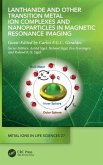Biocompatible fluorescent magnetic nanoparticles are an emerging class of materials that are being extensively studied for imaging of cancer cells. These nanoparticles are composed of magnetic core materials, such as iron oxide, coated with a biocompatible polymer or ligand that provides a stable surface for functionalization with fluorescent dyes. The combination of magnetic and fluorescent properties in a single nanoparticle allows for both imaging and magnetic manipulation of cells, making them a promising tool for cancer diagnosis and treatment. The use of biocompatible fluorescent magnetic nanoparticles for imaging of cancer cells has several advantages over traditional imaging techniques. First, these nanoparticles can be targeted to specific cells or tissues, allowing for more precise imaging of cancer cells. Second, the magnetic properties of these nanoparticles allow for magnetic resonance imaging (MRI), which can provide higher resolution images than traditional imaging techniques. Third, the fluorescent properties of these nanoparticles allow for visualization of cells in real time, providing valuable information about the behavior of cancer cells. The synthesis of biocompatible fluorescent magnetic nanoparticles involves several steps. The first step is the preparation of the magnetic core material, which is typically iron oxide. The iron oxide nanoparticles are then coated with a biocompatible polymer or ligand, such as polyethylene glycol (PEG) or dextran, to provide a stable surface for functionalization with fluorescent dyes. The surface of the nanoparticles is then modified with a targeting ligand, such as an antibody or peptide, to allow for specific binding to cancer cells. The fluorescent dyes used to functionalize these nanoparticles are typically organic dyes, such as fluorescein or rhodamine, or inorganic quantum dots. Organic dyes are preferred for their biocompatibility and ease of synthesis, while quantum dots are preferred for their bright fluorescence and narrow emission spectra. The choice of dye depends on the specific application of the nanoparticles. Biocompatible fluorescent magnetic nanoparticles have been extensively studied for their use in cancer diagnosis and treatment. One application is in the detection of circulating tumor cells (CTCs), which are cancer cells that have detached from the primary tumor and entered the bloodstream. The detection of CTCs is important for the early detection of cancer metastasis, which can improve patient outcomes. Biocompatible fluorescent magnetic nanoparticles can be targeted to CTCs using specific antibodies or peptides, and then imaged using fluorescence microscopy or MRI.
Hinweis: Dieser Artikel kann nur an eine deutsche Lieferadresse ausgeliefert werden.
Hinweis: Dieser Artikel kann nur an eine deutsche Lieferadresse ausgeliefert werden.








